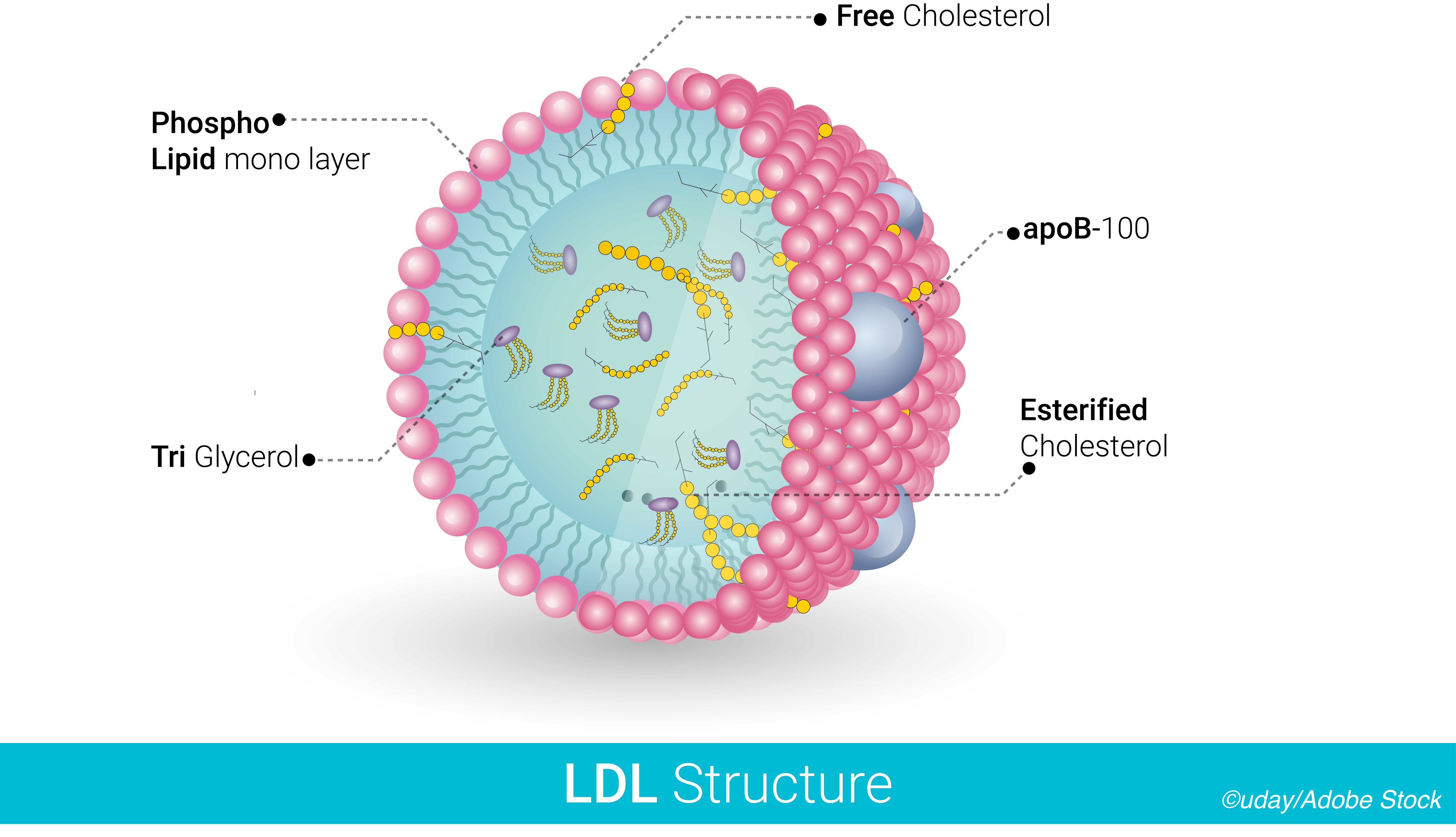
Lower high density lipoprotein (HDL) cholesterol levels and greater HDL variability were associated with higher incidence of Parkinson’s disease (PD), a large, nationwide, population-based, longitudinal study in Korea found.
In this study, “baseline HDL-C level, mean HDL-C level, and HDL-C variability was associated with the risk of PD incidence, regardless of potential confounding factors,” wrote Do-Hoon Kim, MD, of Korea University College of Medicine, Ansan, and co-authors in Neurology.
“HDL has reverse cholesterol transport and a wide range of other functions, including anti-oxidation, anti-inflammation, pro-endothelial function, anti-thrombosis, and modulation of immune function,” they noted. “Because oxidative stress and chronic inflammation may be associated with PD, HDL reduction can affect the development of PD.”
The researchers included data from South Korea’s National Health Insurance System from 2008 to 2013 for 380,404 patients with follow-up until 2017, relating lipid levels to incident diagnosis of PD. Adjusted analysis showed:
- The lowest quartile groups of baseline HDL and mean HDL were associated with increased PD incidence as compared with the highest quartile groups (HR 1.20, 95% CI 1.08-1.34 and HR 1.16, 95% CI 1.04-1.30, respectively).
- The group with highest HDL variability had increased PD incidence compared to the group with lowest HDL variability (HR 1.19, 95% CI 1.06-1.33).
- People who were in both the lowest baseline HDL group and the highest HDL variability group had the highest risk of PD incidence (HR 1.6, 95% CI, 1.31-1.96).
“These findings may have important implications for a better understanding of PD pathophysiology, and considerable clinical relevance because a pharmacological therapy with niacin or fibrates to raise HDL cholesterol levels may potentially contribute to reducing the PD risk beyond the protective effect of this drug treatment on cardiovascular risk in general,” noted Gian Pietro Sechi, MD, of the University of Sassari in Italy, and co-authors, in an accompanying editorial.
Along with anti-oxidative and anti-inflammatory properties of HDL cholesterol, they suggested that “a direct interaction between alpha-synuclein and cholesterol may be hypothesized, which may influence alpha-synuclein aggregation and accumulation.” The possibility of a yet unidentified confounding factor linked to both HDL cholesterol levels and PD might also explain the proposed association, they added.
A 2014 review summarized an emerging consensus that in addition to its protective role in cardiovascular disease, HDL plays an important role in neurodegeneration and cognition. A 2019 study modeling the molecular landscape of PD identified lipid pathways including cholesterol as important in the disorder specifically.
Earlier work on diet and classes of lipids in PD suggested relationships varying in their effect based on fatty acid saturation, including mutual influence between alpha-synuclein — the pathologically aggregated protein whose insoluble aggregates accumulate in PD — and polyunsaturated fatty acids. Research on the effect of both dietary and plasma cholesterol levels, including the HDL fraction, on PD risk has been inconsistent.
“Inconsistent results may be partly explained by different recruitment strategies and inter-cohort heterogeneity, and these issues deserve more in-depth investigations across ethnically different populations,” the editorialists wrote. “In addition, the potential confounding effect of age, sex, use of cholesterol-lowering agents, and variability of HDL cholesterol levels over time is unclear.”
In their study, Kim and colleagues included patients 65 or older with an examination between January 2012 and December 2013. PD diagnosis was determined according to criteria for the ICD-10-CM diagnostic code, and people with history of stroke, head injury, encephalitis, drug side effects, and hypoxia were excluded. Baseline HDL level was measured in 2012 and median follow-up was 5 years.
The included population was 62% men. Ages ranged from 69.8 in the lowest HDL variability group to 70.5 in the highest variability group. Covariates in adjusted analyses included age, sex, smoking status, alcohol consumption, physical activity, household income, body mass index, hypertension diabetes, use of lipid-lowering medication, and baseline HDL.
Mean baseline HDL of the overall population was 53.1 mg/dL. Median HDL variability, measured with a transform of standard deviation independent of the mean, was 7.6.
The hazard ratio of developing PD with baseline HDL <40 mg/dL was 1.21 compared with that of HDL ≥60 mg/dL (95% CI 1.07-1.37).
Although the effect of HDL variability on PD incidence was stronger in participants who were younger, non-diabetic, non-smokers, and non-heavy drinkers, “people in the higher quartile of HDL variability were older and current smokers and had lower rates of alcohol consumption, regular exercise, and lower income,” the authors noted. “They also had higher mean BMI, waist circumference and fasting plasma glucose levels, and higher prevalence rate of hypertension, diabetes mellitus, use of lipid-lowering medications, and CKD than in other groups.”
In most populations, PD incidence is greater in males and low HDL cholesterol levels are more frequent in men, but this study found no substantial differences between men and women for risk of PD as predicted by HDL levels, Sechi and colleagues pointed out.
“The absence of a sex difference in the studied cohort may be attributed, at least in part, to the unique female preponderance in PD reported in Asian populations, as well as to the lower mean HDL cholesterol levels in Korean women after 70 years of age,” they observed.
The study is the only longitudinal report to explore plasma HDL cholesterol variability and clinical features of PD in a large population, the editorialists added. Limitations include the possibility of reverse causality due to the long prodromal phase of PD.
-
Lower high density lipoprotein (HDL) cholesterol levels and greater HDL variability were associated with higher incidence of Parkinson’s disease (PD), a large longitudinal study in Korea found.
-
Older adults who were in both the lowest baseline HDL group and the highest HDL variability group had the highest risk of PD incidence.
Paul Smyth, MD, Contributing Writer, BreakingMED™
The study was supported by Korea University Ansan Hospital and Korea Medical Institute.
Kim reported no disclosures.
Sechi reported no disclosures.
Cat ID: 37
Topic ID: 82,37,730,914,37,192,925


